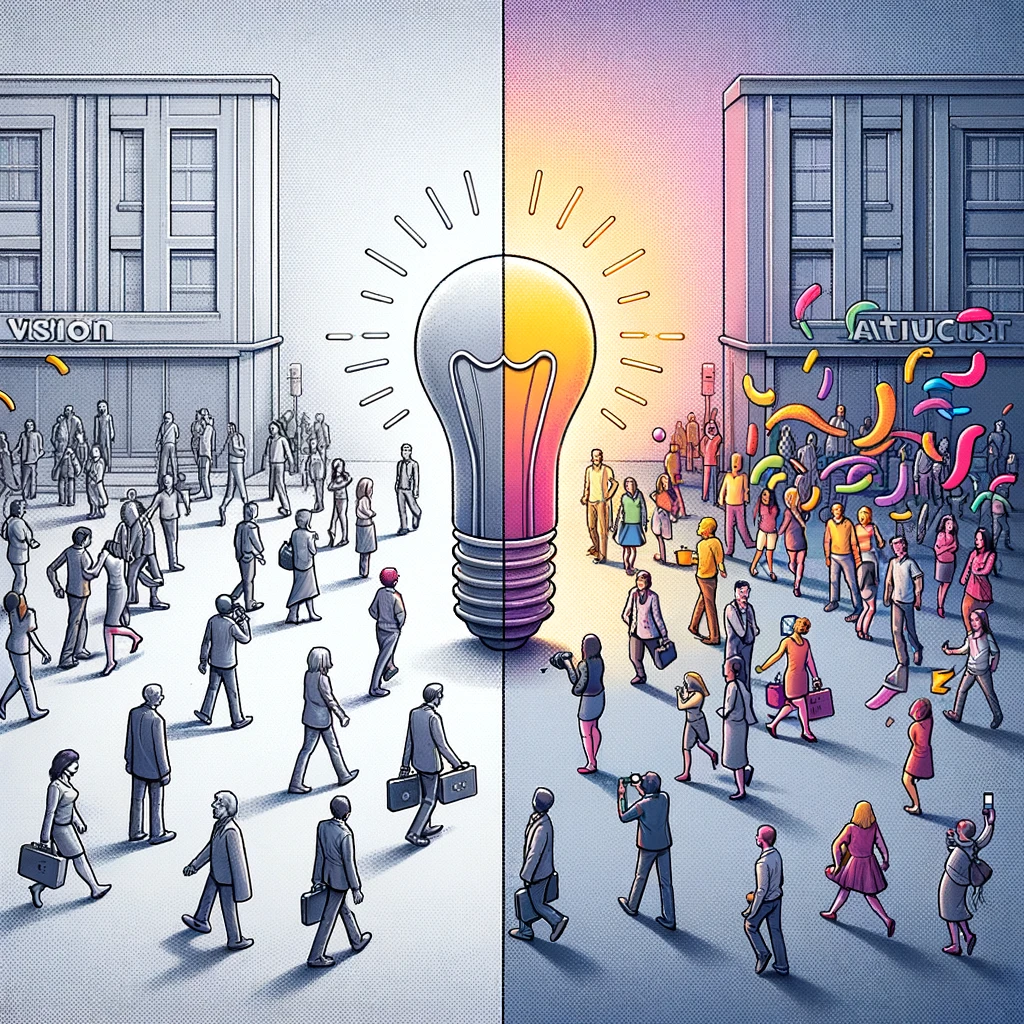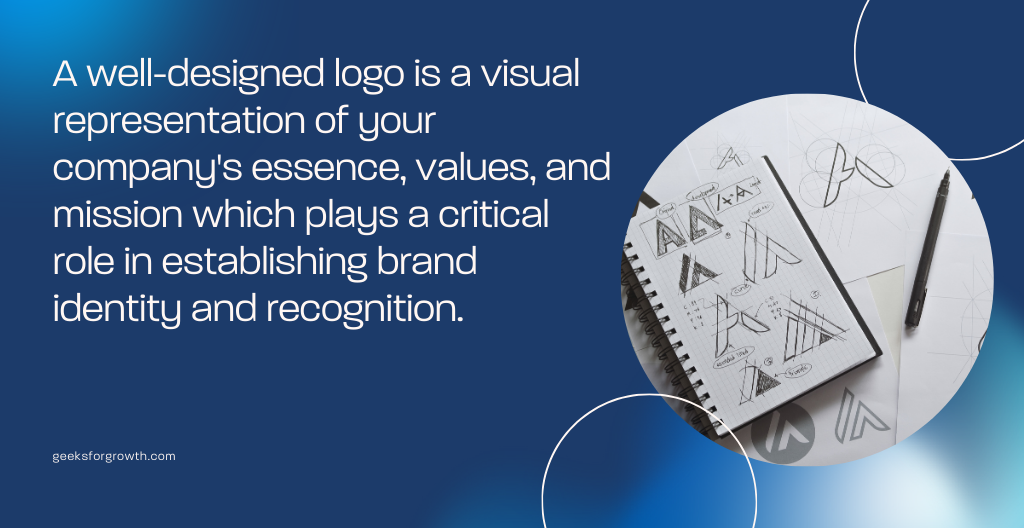A well-designed logo is a brand’s silent ambassador, leaving a lasting impression on potential customers. It’s a visual representation of your company’s essence, values, and mission, playing a critical role in establishing brand identity and recognition. But what makes a logo truly effective?
This article analyzes six fundamental principles that underpin successful logo design while equipping local business owners with the knowledge to create impactful visual identities that resonate with their target audience.
If you’re a business owner looking to create or re-design your business logo, this write-up is for you!
I. The Power of Simplicity
Imagine trying to decipher a complex puzzle in a fleeting glance. That’s the challenge you present to your audience with an overly intricate logo. Simplicity is key. Think of Apple’s clean, single-bite apple or Nike’s iconic swoosh. These logos are instantly recognizable and easily remembered due to their minimalistic design.
Tips for Simplifying Your Logo:
- Focus on a single, clear message. What do you want your logo to convey?
- Prioritize clean lines and shapes. Avoid cluttering your design with unnecessary details.
- Choose a limited color palette. Two or three well-chosen colors create a cohesive and impactful look.
A logo is your brand’s handshake – a quick and memorable introduction. While they can come in a variety of styles, from playful mascots to highly detailed emblems, the key always lies in the underlying concept. Imagine encountering someone at a networking event. You don’t have time to decipher a complex backstory; your first impression comes from a clear greeting and a confident presence. Your logo needs to function similarly.
The power lies in a simple idea, not necessarily a minimalist form. Think of the Lacoste crocodile – a recognizable symbol that conveys a sense of quality and heritage. Similarly, the Target bullseye instantly communicates its focus on deals and savings. These logos are effective because the concept behind them is clear and easily grasped by viewers.
II. The Art of Memorability
A memorable logo sticks in your mind long after you’ve seen it. Think of McDonald’s golden arches or FedEx’s hidden arrow. These logos are instantly recognizable due to their unique and memorable design elements.
Strategies for Creating Memorable Logos:
- Use bold colors and contrasting elements. This helps your logo stand out from the visual noise.
- Incorporate negative space creatively. The space within your logo can be just as impactful as the elements themselves. Consider FedEx’s arrow as an example.
- Evoke emotions. A logo that triggers positive emotions like trust, happiness, or confidence will be more likely to be remembered.
III. Versatility: Adapting to Different Platforms
Your logo needs to be versatile enough to function effectively across various platforms and applications, from your website and business cards to social media profiles and merchandise. Imagine a logo that looks great on a billboard but loses its detail when printed on a pen. Not ideal!
Techniques for Ensuring Logo Versatility:
- Choose a vector graphic format. This allows your logo to be scaled to any size without losing quality.
- Test your logo on different backgrounds and in various sizes. This helps identify any potential issues with legibility or detail loss.
Keep your design clean and uncluttered. Complex designs are harder to adapt for different uses.
IV. The Pursuit of Timelessness
Fads come and go, and your logo shouldn’t be a victim of fleeting trends. A timeless logo transcends current design trends and remains relevant for years to come. Think of Coca-Cola’s classic script or Levi’s red tab. These logos have stood the test of time, retaining their brand recognition and appeal for decades.
Methods for Achieving Timelessness in Logo Design:
- Avoid trendy design elements and overly stylized typefaces. Opt for classic and elegant design choices.
- Focus on strong composition and balance. This creates a sense of order and professionalism.
- Use universally appealing colors and evoke positive emotions.
V. Relevance: Connecting with Your Brand and Audience
Your logo should not only be visually appealing but also relevant to your brand and target audience. It should visually communicate your brand’s values, mission, and the products or services you offer. Think of Apple’s logo, which reflects its focus on innovation and simplicity.
VI. Embracing Originality
In a sea of generic logos, originality allows your brand to stand out and make a lasting impression. Think of Lacoste’s crocodile or PayPal’s interlocking P’s. These logos are unique and instantly recognizable, setting their brands apart from the competition.

Techniques for Fostering Creativity and Originality:
- Research existing logo designs, but avoid copying. Use them for inspiration, not imitation.
- Experiment with different design elements and concepts. Don’t be afraid to think outside the box.
- Seek feedback from designers and branding professionals. Their expertise can help refine your ideas and ensure your logo is visually impactful.
We’ve already delved into the six key principles for crafting a new logo. But what about logos that have already served their purpose for years? Can they still be effective in today’s dynamic market? The answer is yes. However, even established logos may need adjustments over time to stay relevant and maintain their impact.
Here are some signs that your logo might be due for an update:
- Outdated design trends: Does your logo resemble styles popular a decade ago? If so, it might not connect with your current audience as effectively.
- Difficulty adapting to different mediums: Does your logo lose its detail when printed on a pen or displayed on a small mobile screen? Versatility is crucial for a logo used across various platforms.
- Failing to resonate with your target audience: As your brand evolves, your target audience might change too. Does your logo still accurately reflect your brand’s values and message?
If your logo exhibits any of these signs, consider optimizing it, not necessarily redesigning it completely. Here are some practical tips:
- Refine, not redesign: Focus on subtle improvements like adjusting colors, refining lines, or updating the typography. Think of it as polishing a gem, not replacing it entirely.
- Maintain core elements: Preserve the recognizable aspects of your logo that hold brand value. Don’t throw away the baby with the bathwater!
- Seek professional guidance: Collaborating with a designer can ensure your logo update stays aligned with your brand’s core values and maintains its effectiveness.
Remember, a well-executed logo optimization can breathe new life into your brand identity without sacrificing recognition and trust built over time.

Logo designs are constantly evolving, with new trends emerging to reflect the changing digital landscape and consumer preferences. According to smallbizgenius.net, a well-designed logo can increase a company’s brand recognition by 80% Here are a few examples of cutting-edge logo ideas to spark your inspiration:
- Interactive logos: These logos respond to user interaction, adapting elements based on mouse movement or user clicks.
- Animated logos: Subtle animation can add dynamism and create a more engaging experience, particularly for online and social media platforms.
- Gradients and duotone effects: Utilizing color gradients or dual-tone color schemes can create a modern and visually appealing look.
- Negative space and hidden elements: Integrating negative space creatively or incorporating hidden elements can add depth and intrigue to your logo, encouraging viewers to explore its visual layers.
It’s important to remember that these are just a few examples, and the best approach for your logo will depend on your brand’s unique identity and target audience. Always ensure any cutting-edge design choices align with your core values and resonate with your audience to maintain a cohesive and impactful brand experience.
By understanding the principles of effective logo design and staying informed about emerging trends, you can ensure your logo, whether new or optimized, continues to be a powerful visual representation of your brand for years to come.





